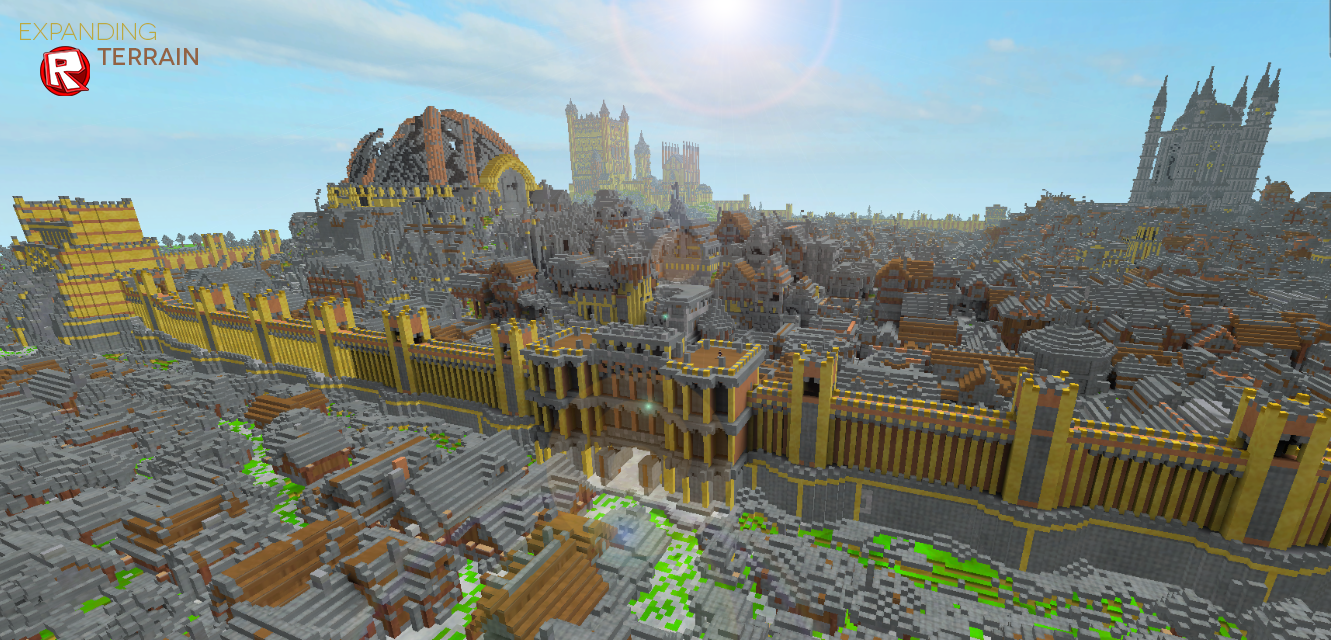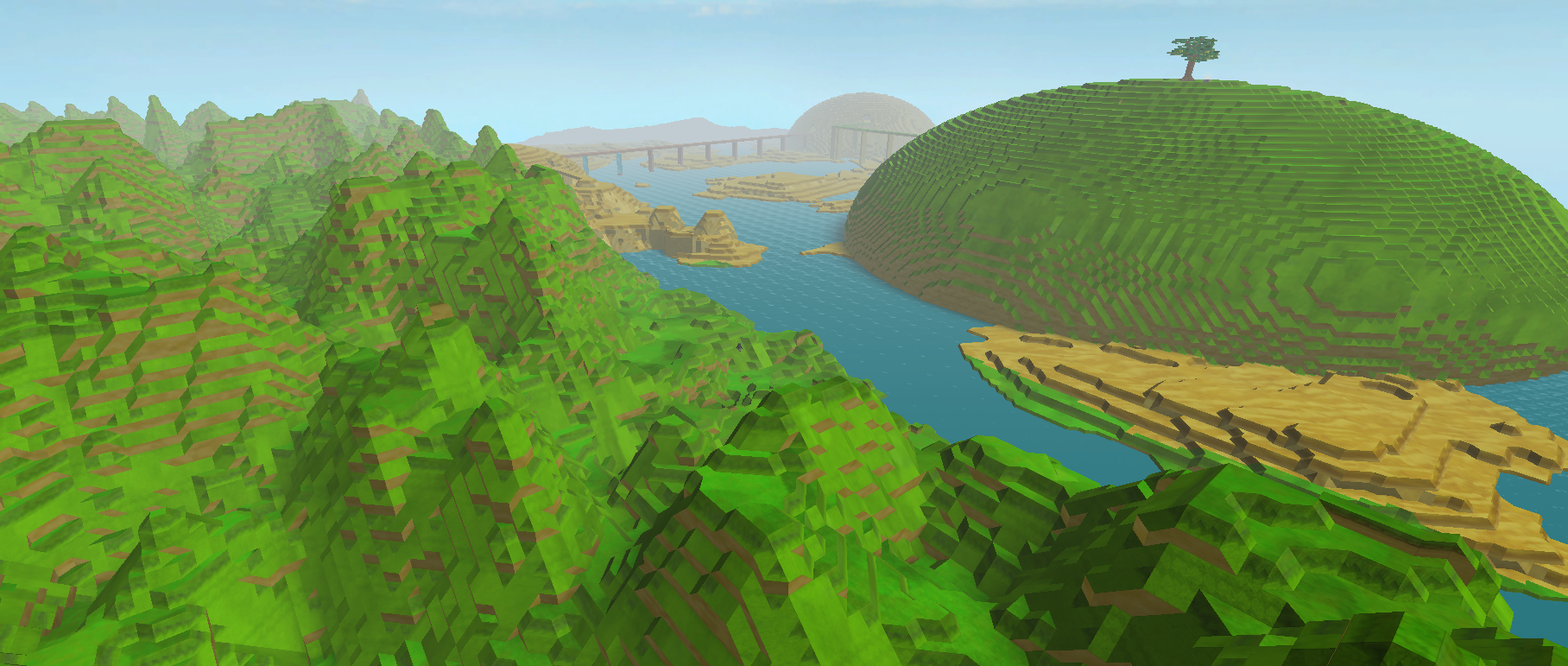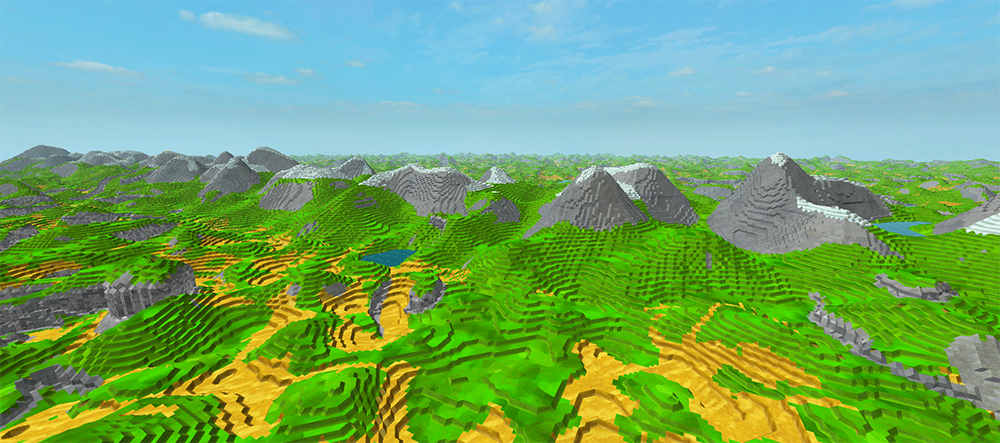Blog Archive
When we released voxel terrain in 2011, we realized that creators had to adhere to a narrowly defined set of rules. As with any major release, we kept a steady ear to the ground and gathered as much feedback as possible to determine how to improve the feature make it a more viable and enjoyable tool for building. Though we’ll be updating the overall “look” or our terrain the coming months, infrastructural changes first had to be made to broaden the scope of terrain capabilities. We distilled your feedback into three significant improvements, each of which we’ve been working to address.
Broadening voxel parameters
As anyone who uses our current terrain system will tell you, using terrain means you have to adhere to a strict set of rules. We created these rules in the beginning to make terrain easy to implement and use. Now that it’s been out for a while, we want to give builders more flexibility in terms of how much terrain can be used and how far it can span. Starting today, you can place terrain up to 100,000 studs from its origin. This not only means that you will be able to make massive places moving forward, but you can add expanses of terrain to existing builds. (For instance, there are many builders and developers waiting to implement terrain water in their existing creations.) We’ve also effectively expanded the maximum terrain size from 512 x 64 x 512 to 64,000 x 64,000 x 64,000 voxels. Build big in all directions.
We’re not just updating the horizontal axis, but the vertical axis, as well. Prior to this update, terrain builds were limited in height to 64 voxels, and you could only build upward (you could never build below the base plate). Now you can build as high (or low) as 32,000 voxels, which we’ve deemed is a reasonable limit. If you do happen to build something that is 32,000 voxels high, please send it to us immediately.
Lowering memory consumption
We’ve completely overhauled the way our terrain consumes memory, leading to a lighter terrain system that consumes 3X less memory than before. We focused on completing this project for two primary reasons. First, many people wanted to be able to use the new terrain water but were limited by memory constraints. Second, we recently developed a streaming system that moves parts in and out of memory as you move throughout the virtual world. Terrain can now be streamed in order to create and play huge levels. All of this was in an effort to meet a simple goal: the ability to place terrain anywhere.
Terrain region copy/paste API
Many builders expressed concern about interactive terrain (i.e. terrain that shifts due to an explosion). If you make your terrain destructible, it’s pretty amazing how fast a level can be reduced to rubble. When a level is so far destroyed that it begins to negatively affect gameplay, that’s a problem. So we’ve introduced a new scripting API, which essentially allows you to take a snapshot of your entire level (sans the destruction) and revert your destroyed place back to its original state, either in-game or in Studio.
To get a sense of how the code works for yourself, take a copy of this place we just uncopylocked and check out the code.
More terrain updates coming
You may have noticed that we are slowly updating the look of ROBLOX, and we have plans to update the appearance of terrain, as well. We’re working on this new look and will keep you updated when we’ve settled on the right aesthetic for ROBLOX. For now, jump into Studio and start building big with voxel terrain! We can’t wait to see what you create.


